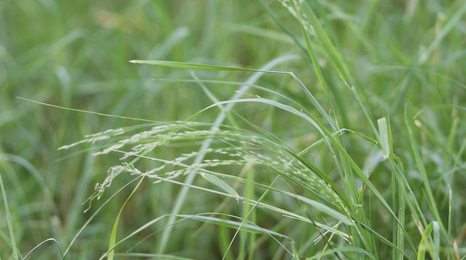Quick facts
- The University of Minnesota created a study in 2016 to measure yield and forage nutritive values.
- It was found that teff, alfalfa, and perennial ryegrass all meet the nutritional needs for horses and would be good grazing options in the Upper Midwest.
- They recommend teff for horses that are likely to have energy-storing or energy-releasing problems or have lower energy needs.
- For horses with higher nutritional needs, they suggest alfalfa and perennial ryegrass.
Summer and fall grazing trial
During the 2016 grazing season in St. Paul, MN, the study evaluated varieties of three forage species, including:
- Teff (a warm-season annual grass)
- Perennial ryegrass (a cool-season perennial grass)
- Alfalfa (a perennial legume)
The horses grazed perennial ryegrass and alfalfa monthly from May to October (with the exception of September) and grazed Teff monthly from July to September. Alfalfa and perennial ryegrass pastures were established in 2015, while teff pastures were established on June 6, 2016.
- Six adult horses grazed for about six hours a day for three consecutive days each month during the grazing season.
- The study evaluated forage yield and nutritive values prior to grazing, which was initiated when perennial ryegrass and teff were between 8 and 10 inches or when alfalfa reached bud stage.
- Following grazing, they removed manure and mowed any remaining forage to 3 (alfalfa) or 4 inches (perennial ryegrass and teff) and allowed them to regrow.
Yield differences
- Alfalfa had the highest yield at 6.9 tons per acre in comparison to perennial ryegrass (3.2 tons per acre) and teff (2.8 tons per acre).
- However, they grazed the horses on perennial ryegrass 5 times throughout the grazing season and teff 3 times.
- While these results suggest alfalfa is the most productive pasture species, the ability of alfalfa to withstand long-term grazing needs to be explored.
- Teff also appears to be a productive annual pasture species option.
Forage meets nutrition needs
Alfalfa also had the highest crude protein (CP) and equine digestible energy (DE), followed by perennial ryegrass and teff. However, all species exceed the general recommendation of 12 percent CP for adult horses at maintenance and would meet or exceed the DE requirements for adult horses at maintenance.
Both alfalfa and teff had lower nonstructural carbohydrates (NSC) values than perennial ryegrass. Although there are no nutritional recommendations for NSC in the horse diet, researchers suggest limiting the overall diet to less than or equal 10 to 12 percent for horses with the following:
- Equine metabolic syndrome (EMS)
- Laminitis
- Polysaccharide storage myopathy (PSSM)
- Obesity
- Pituitary Pars Intermedia Dysfunction (PPID)
Based on these guidelines, teff and alfalfa would be possible forage options for horses diagnosed with these diseases.
Additionally, teff had the highest Acid Detergent Fiber (ADF) and Neutral Detergent Fiber (NDF) values while alfalfa exhibited the lowest values. Although no recommendations for NDF and ADF in the horse diet exist, most experts recommend horse-quality hay should be less than or equal to 65 percent NDF and less than or equal to 45 percent ADF.
These results suggest teff is more suitable for horses with lower energy demands or horses prone to metabolic concerns. In comparison, alfalfa and perennial ryegrass have the capability of meeting nutritional requirements of horses with elevated nutritional needs. However, all forages meet the DE and CP requirements of adult horses at maintenance based on consuming 2.5 percent body weight on a dry matter basis each day.
Forage nutritive values during 2016 grazing trial
| Species | Yield | CP | NDF | ADF | NSC | DE |
|---|---|---|---|---|---|---|
| Tons/Acres | percent dry matter | percent dry matter | percent dry matter | percent dry matter | Mcal/lb. | |
| Alfalfa | 6.9 | 28 | 39 | 29 | 8.4 | 1.15 |
| Perennial ryegrass | 3.2 | 21 | 51 | 30 | 11.7 | 1.08 |
| Teff | 2.8 | 18 | 63 | 36 | 8.2 | 0.93 |
Reviewed in 2024




